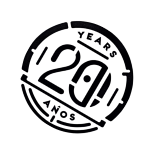Ardora 10 creating web-based learning content
VERSION 10.0 - 15/01/2024
- PLUGIN FOR MOODLE:
From Ardora version 10 you can get the plugin which allows you to insert contents created with Ardora in Moodle. In this way, when you upload the content to Moodle, you might get the same functionalities that you used to have when using the "user control"; for example, you could get a detailed report of all the work done by each student or you can also offer the students the possibility to continue doing a package of activities from the last activity not correctly solved in a previous attempt.
The plugin can be obtained from the utilities menu of the programme..
At the moment, the following contents can be uploaded to Moodle using this extension: any of the interactive activities, activity packs and web spaces (multimedia pages can be uploaded to Moodle like any other content as no interaction with the student is needed).
In the case of activities and activity packages, the plugin will record the grade achieved in the Moodle gradebook.
See the programme help for more details.
- MULTIMEDIA PAGES:
Text and images: video alignment is now allowed.
- GENERAL ISSUES:
We can now drag and drop ard files into the program to open them..
- PAGES WITHIN A SERVER:
php: the code of these pages has been adapted for version 8.2 of this language.
VERSION 9.5 - 10/06/2023
- "RESPONSIVE":
Now the packages of activities, web sites and the multimedia page "svg" include the option for these contents to have a "responsive" behaviour, being able to choose the devices (PC, mobile or tablet) on which it will have an effect. We can also specify the "orientation" (horizontal and/or vertical) in which this behaviour can take place.
- MULTIMEDIA PAGES:
Board: the background of this multimedia page now offers the possibility of choosing not only the size in pixels of the background image, but also whether it adapts (without deforming) to the window, by indicating the value "contain"; whether it is scaled to fully cover the entire screen, by means of the value "cover"; or whether it maintains the size specified in "width" and "height", by means of the value "auto" (default value).
